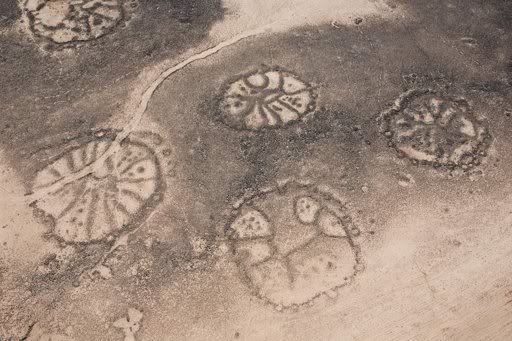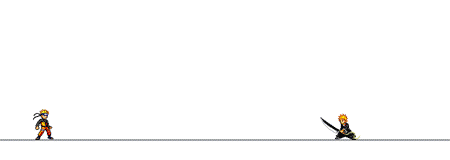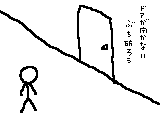Yu Muroga is a Japanese driver. It was his tour took place when the earthquake March 11, 2011. Like most people of his area, he did not feel threatened by the tsumani, as it was far enough from the coast. So he continued to drive and do its job. The HD camera mounted on the dashboard has not only captured the shock but also the moments that followed, where many drivers were stranded by the waters of the tsunami.
Note : The "Dancing" man at the road junction is due to EARTHQUAKE (ground shaking)
Monday, September 19, 2011
Visible Only From Above, Mystifying 'Nazca Lines' Discovered in Mideast
By Owen Jarus | LiveScience.com – Thu, Sep 15, 2011
The giant stone structures form wheel shapes with spokes often radiating inside. Here a cluster of wheels in the Azraq Oasis. CREDIT: David D. Boyer

They stretch from Syria to Saudi Arabia, can be seen from the air but not the ground, and are virtually unknown to the public.
They are the Middle East's own version of the Nazca Lines — ancient "geolyphs," or drawings, that span deserts in southern Peru — and now, thanks to new satellite-mapping technologies, and an aerial photography program in Jordan, researchers are discovering more of them than ever before. They number well into the thousands.
Referred to by archaeologists as "wheels," these stone structures have a wide variety of designs, with a common one being a circle with spokes radiating inside. Researchers believe that they date back to antiquity, at least 2,000 years ago. They are often found on lava fields and range from 82 feet to 230 feet (25 meters to 70 meters) across. [See gallery of wheel structures]
"In Jordan alone we've got stone-built structures that are far more numerous than (the) Nazca Lines, far more extensive in the area that they cover, and far older," said David Kennedy, a professor of classics and ancient history at the University of Western Australia.
Kennedy's new research, which will be published in a forthcoming issue of the Journal of Archaeological Science, reveals that these wheels form part of a variety of stone landscapes. These include kites (stone structures used for funnelling and killing animals); pendants (lines of stone cairns that run from burials); and walls, mysterious structures that meander across the landscape for up to several hundred feet and have no apparent practical use.
His team's studies are part of a long-term aerial reconnaissance project that is looking at archaeological sites across Jordan. As of now, Kennedy and his colleagues are puzzled as to what the structures may have been used for or what meaning they held. [History's Most Overlooked Mysteries]
Fascinating structures
Kennedy's main area of expertise is in Roman archaeology, but he became fascinated by these structures when, as a student, he read accounts of Royal Air Force pilots flying over them in the 1920s on airmail routes across Jordan. "You can't not be fascinated by these things," Kennedy said.
Indeed, in 1927 RAF Flight Lt. Percy Maitland published an account of the ruins in the journal Antiquity. He reported encountering them over "lava country" and said that they, along with the other stone structures, are known to the Bedouin as the "works of the old men."
Kennedy and his team have been studying the structures using aerial photography and Google Earth, as the wheels are hard to pick up from the ground, Kennedy said.
"Sometimes when you're actually there on the site you can make out something of a pattern but not very easily," he said. "Whereas if you go up just a hundred feet or so it, for me, comes sharply into focus what the shape is."
The designs must have been clearer when they were originally built. "People have probably walked over them, walked past them, for centuries, millennia, without having any clear idea what the shape was."
(The team has created an archive of images of the wheels from various sites in the Middle East.)
What were they used for ?
So far, none of the wheels appears to have been excavated, something that makes dating them, and finding out their purpose, more difficult. Archaeologists studying them in the pre-Google Earth era speculated that they could be the remains of houses or cemeteries. Kennedy said that neither of these explanations seems to work out well.
"There seems to be some overarching cultural continuum in this area in which people felt there was a need to build structures that were circular."
Some of the wheels are found in isolation while others are clustered together. At one location, near the Azraq Oasis, hundreds of them can be found clustered into a dozen groups. "Some of these collections around Azraq are really quite remarkable," Kennedy said.
In Saudi Arabia, Kennedy's team has found wheel styles that are quite different: Some are rectangular and are not wheels at all; others are circular but contain two spokes forming a bar often aligned in the same direction that the sun rises and sets in the Middle East.
The ones in Jordan and Syria, on the other hand, have numerous spokes and do not seem to be aligned with any astronomical phenomena. "On looking at large numbers of these, over a number of years, I wasn't struck by any pattern in the way in which the spokes were laid out," Kennedy said.
Cairns are often found associated with the wheels. Sometimes they circle the perimeter of the wheel, other times they are in among the spokes. In Saudi Arabia some of the cairns look, from the air, like they are associated with ancient burials.
Dating the wheels is difficult, since they appear to be prehistoric, but could date to as recently as 2,000 years ago. The researchers have noted that the wheels are often found on top of kites, which date as far back as 9,000 years, but never vice versa. "That suggests that wheels are more recent than the kites," Kennedy said.
Amelia Sparavigna, a physics professor at Politecnico di Torino in Italy, told Live Science in an email that she agrees these structures can be referred to as geoglyphs in the same way as the Nazca Lines are. "If we define a 'geoglyph' as a wide sign on the ground of artificial origin, the stone circles are geoglyphs," Sparavignawrote in her email.
The function of the wheels may also have been similar to the enigmatic drawings in the Nazca desert. [Science as Art: A Gallery]
"If we consider, more generally, the stone circles as worship places of ancestors, or places for rituals connected with astronomical events or with seasons, they could have the same function of [the] geoglyphs of South America, the Nazca Lines for instance. The design is different, but the function could be the same," she wrote in her email.
Kennedy said that for now the meaning of the wheels remains a mystery. "The question is what was the purpose?"
The giant stone structures form wheel shapes with spokes often radiating inside. Here a cluster of wheels in the Azraq Oasis. CREDIT: David D. Boyer

They stretch from Syria to Saudi Arabia, can be seen from the air but not the ground, and are virtually unknown to the public.
They are the Middle East's own version of the Nazca Lines — ancient "geolyphs," or drawings, that span deserts in southern Peru — and now, thanks to new satellite-mapping technologies, and an aerial photography program in Jordan, researchers are discovering more of them than ever before. They number well into the thousands.
Referred to by archaeologists as "wheels," these stone structures have a wide variety of designs, with a common one being a circle with spokes radiating inside. Researchers believe that they date back to antiquity, at least 2,000 years ago. They are often found on lava fields and range from 82 feet to 230 feet (25 meters to 70 meters) across. [See gallery of wheel structures]
"In Jordan alone we've got stone-built structures that are far more numerous than (the) Nazca Lines, far more extensive in the area that they cover, and far older," said David Kennedy, a professor of classics and ancient history at the University of Western Australia.
Kennedy's new research, which will be published in a forthcoming issue of the Journal of Archaeological Science, reveals that these wheels form part of a variety of stone landscapes. These include kites (stone structures used for funnelling and killing animals); pendants (lines of stone cairns that run from burials); and walls, mysterious structures that meander across the landscape for up to several hundred feet and have no apparent practical use.
His team's studies are part of a long-term aerial reconnaissance project that is looking at archaeological sites across Jordan. As of now, Kennedy and his colleagues are puzzled as to what the structures may have been used for or what meaning they held. [History's Most Overlooked Mysteries]
Fascinating structures
Kennedy's main area of expertise is in Roman archaeology, but he became fascinated by these structures when, as a student, he read accounts of Royal Air Force pilots flying over them in the 1920s on airmail routes across Jordan. "You can't not be fascinated by these things," Kennedy said.
Indeed, in 1927 RAF Flight Lt. Percy Maitland published an account of the ruins in the journal Antiquity. He reported encountering them over "lava country" and said that they, along with the other stone structures, are known to the Bedouin as the "works of the old men."
Kennedy and his team have been studying the structures using aerial photography and Google Earth, as the wheels are hard to pick up from the ground, Kennedy said.
"Sometimes when you're actually there on the site you can make out something of a pattern but not very easily," he said. "Whereas if you go up just a hundred feet or so it, for me, comes sharply into focus what the shape is."
The designs must have been clearer when they were originally built. "People have probably walked over them, walked past them, for centuries, millennia, without having any clear idea what the shape was."
(The team has created an archive of images of the wheels from various sites in the Middle East.)
What were they used for ?
So far, none of the wheels appears to have been excavated, something that makes dating them, and finding out their purpose, more difficult. Archaeologists studying them in the pre-Google Earth era speculated that they could be the remains of houses or cemeteries. Kennedy said that neither of these explanations seems to work out well.
"There seems to be some overarching cultural continuum in this area in which people felt there was a need to build structures that were circular."
Some of the wheels are found in isolation while others are clustered together. At one location, near the Azraq Oasis, hundreds of them can be found clustered into a dozen groups. "Some of these collections around Azraq are really quite remarkable," Kennedy said.
In Saudi Arabia, Kennedy's team has found wheel styles that are quite different: Some are rectangular and are not wheels at all; others are circular but contain two spokes forming a bar often aligned in the same direction that the sun rises and sets in the Middle East.
The ones in Jordan and Syria, on the other hand, have numerous spokes and do not seem to be aligned with any astronomical phenomena. "On looking at large numbers of these, over a number of years, I wasn't struck by any pattern in the way in which the spokes were laid out," Kennedy said.
Cairns are often found associated with the wheels. Sometimes they circle the perimeter of the wheel, other times they are in among the spokes. In Saudi Arabia some of the cairns look, from the air, like they are associated with ancient burials.
Dating the wheels is difficult, since they appear to be prehistoric, but could date to as recently as 2,000 years ago. The researchers have noted that the wheels are often found on top of kites, which date as far back as 9,000 years, but never vice versa. "That suggests that wheels are more recent than the kites," Kennedy said.
Amelia Sparavigna, a physics professor at Politecnico di Torino in Italy, told Live Science in an email that she agrees these structures can be referred to as geoglyphs in the same way as the Nazca Lines are. "If we define a 'geoglyph' as a wide sign on the ground of artificial origin, the stone circles are geoglyphs," Sparavignawrote in her email.
The function of the wheels may also have been similar to the enigmatic drawings in the Nazca desert. [Science as Art: A Gallery]
"If we consider, more generally, the stone circles as worship places of ancestors, or places for rituals connected with astronomical events or with seasons, they could have the same function of [the] geoglyphs of South America, the Nazca Lines for instance. The design is different, but the function could be the same," she wrote in her email.
Kennedy said that for now the meaning of the wheels remains a mystery. "The question is what was the purpose?"
Massive 20m deep crater opens up in German town

An aerial view of a large crater that appeared in the early hours in the central German town of Schmalkalden, November 1, 2010. A huge crater measuring 30 by 40 metres (98 by 131 feet ) has opened up in the middle of a residential estate early in the morning on Monday, according to local police. No one was reported hurt in the incident

Residents in the German town of Schmalkalden probably had the shock of their lives when they opened their bedroom curtains as a giant crater had formed overnight.
There is no injuries but forcing the evacuation of 25 people.This huge hole caused by landslide or impact by meteor hit ? The experts are now still investigating..


Shanghainese women change attire on train
By Fann Sim – Wed, Sep 14, 2011
Photos and videos of Shanghainese women undressing and changing their clothes on the train have surfaced on the Internet.
On 22 August, a netizen caused a stir after uploading photos and videos of a girl on Shanghai's Metro train. The video detailed a girl stripping down to her underwear and changing clothes inside the train cabin.

Netizens believed that she was either late for work or doing it for a publicity stunt as the clothes she changed into looked like a uniform for cosplaying purposes.
The woman changed into a "uniform" that looks like it's for cosplaying purposes.

Some have said that such an act is immoral and very unsightly to look at while others disagreed with the public outcry.
A Chinese user wrote, "What's the big deal? Society's development should mean more diversity/pluralism. If it's always traditional ideas, we won't keep up with the times/fashion. Does everyone still remember the 80s, where peeping (into) the ladies would result in being sentenced to death? Now that we think about it, wasn't that going too far?"
Photos and videos of Shanghainese women undressing and changing their clothes on the train have surfaced on the Internet.
On 22 August, a netizen caused a stir after uploading photos and videos of a girl on Shanghai's Metro train. The video detailed a girl stripping down to her underwear and changing clothes inside the train cabin.

Netizens believed that she was either late for work or doing it for a publicity stunt as the clothes she changed into looked like a uniform for cosplaying purposes.
The woman changed into a "uniform" that looks like it's for cosplaying purposes.

Some have said that such an act is immoral and very unsightly to look at while others disagreed with the public outcry.
A Chinese user wrote, "What's the big deal? Society's development should mean more diversity/pluralism. If it's always traditional ideas, we won't keep up with the times/fashion. Does everyone still remember the 80s, where peeping (into) the ladies would result in being sentenced to death? Now that we think about it, wasn't that going too far?"
Subscribe to:
Comments (Atom)




















